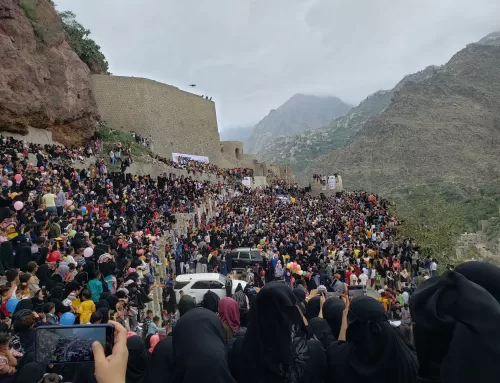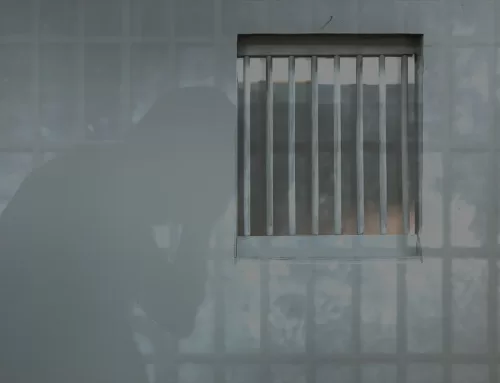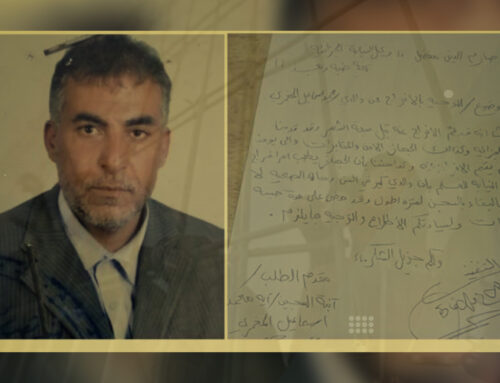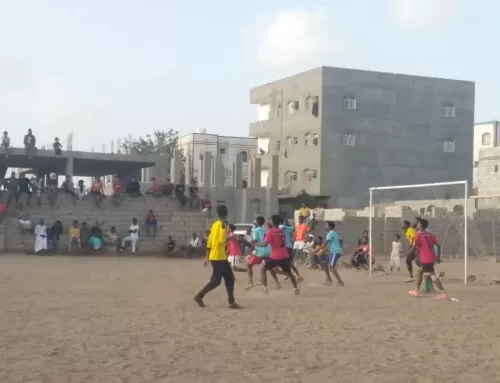Traveling from Al-Jawf
“How The War Lengthened Our Journeys”
13 October 2021
Our journey to Sana’a for a human rights training course started from Al-Hazm city in the centre of Al-Jawf province at 7:30 in the morning on Saturday, September 5, 2020. We set off in a Hilux SUV, passing through the Salamat area of Al-Ghail District onto the main road to the Al-Rawdh area in the centre of Al-Khalq District and then crossing the archaeological area of Baraqish, which is the southernmost boundary of Al-Jawf province. We continued on the road through the villages and areas of the Majzar district of the Ma’rib province until Al-Jawf junction.
At the Al-Jawf Junction, the scenes of the destruction resulting from the coalition airstrikes and the military confrontations between the Ansar Allah (Houthis) and the internationally recognized government forces caught our attention.
We could only see remnants of shops and other civilian properties in the ghostly Al-Jawf Junction, which is a vital point linking three provinces: Al-Jawf, Marib and Sana’a. Before 2015, this area was booming with life, lined with everything from restaurants and shops to gas stations.
We continued the journey towards Fardhat Nihm, an area we could only dream to travel through on the way to Sana’a during the past four years. But after Ansar Allah took control of Fardhat Nihm and Al-Jawf Junction at the beginning of 2020, the road was reopened.
It came as a sad shock that the Fardhat Nihm bridge was destroyed. It was the only way to cross the valley, and it had been targeted by the Saudi/UAE-led coalition aircrafts in the midst of violent clashes between the warring parties in the early days of the war. Now, instead of the bridge, both large trucks and small cars had to stumble through a difficult road to cross the valley.
At the end of Fardhat Nihm there was a checkpoint controlled by Ansar Allah (Houthis). They stopped us for a while to search the car before we went on our way. When we passed through the villages and rural areas of Nihm, the sights and scenes became even more painful.
It was our first trip on this road since it was closed due to the war in early 2015, and it took us three to four hours to travel. As we were moving, our eyes continued to gaze upon the devastation and destruction that the war had left on the sides of the road, bringing an incessant pain to our hearts seeing what our country has become. Nothing in these areas were spared the effects of war and destruction. From military vehicles and equipment to markets, shops, civilian homes and farms, all were destroyed by the military confrontations and coalition airstrikes.
The Minefield
It is unfortunate that the dangers of war have continued to impact the lives of civilians even after the military confrontations stopped in the Nihm district of Sana’a province. Warning signs of landmines lined the asphalt road, reminding drivers to be careful not to veer from the precise route drawn for them. Barbed wire and warning signs extend all the way from Ras Fardhat Nihm to the area near Nuqil bin Ghaylan even though these areas are vacant other than passer-byers and travellers.
Checkpoints
There are about 18 security checkpoints and military barricades between the city of Hazm and the entrance of Sana’a, all belonging to Ansar Allah. We were required to stop at each checkpoint for 5 to 10 minutes to be searched and to show ID cards.
One of the most complicated checkpoints for those travelling on this road belongs to the so-called Houthi Preventive Security forces in the Mahli area of Nihm district. Some travellers are stopped there for hours before they are allowed to continue on their journey.
Hovering Aircraft
After the human rights training course ended we resumed our journey back to our areas. Around noon, we were surprised by the sight of an aircraft flying above Fardhat Nihm.
An armed Houthi man asked us to take cover under one of the big umbrellas by the road so that we would not be bombed by the aircraft, so the driver stopped and parked the car. We were stopped for about 15 minutes, during which feelings of anticipation, fear and terror flooded through us as we saw death hovering over our heads.
Despite the exhaustion and fear, we knew that the risks were lower than the early years of the war when Nihm road was cut off due to violent confrontations between the internationally recognized government forces backed by coalition aircrafts and the Ansar Allah.
At that time travellers had to take other more risky routes which involved dangers like traffic accidents due to rough roads and even airstrikes targeting travellers on the Upper Jawf-Arhab-Sufyan road, as well as bullets and artillery shells from the military confrontations in the outskirts of Mutoun district.
On these secondary roads there was also the danger of mines planted by Ansar Allah, but it was the only road from this side to Sana’a for travellers and large trailers that transport basic materials and fuel. The length of this road is estimated to be 300 km, and it is further lengthened by the strict security measures stifling travellers coming from areas under the control of the internationally recognized government at Ansar Allah checkpoints. In addition, travellers need more than six hours to pass through rugged and exhausting mountain roads.
Although after Fardhat Nihm road was reopened at the beginning of 2020, most of the travel risks remain, but at least the travel time is reduced to four hours instead of six.






